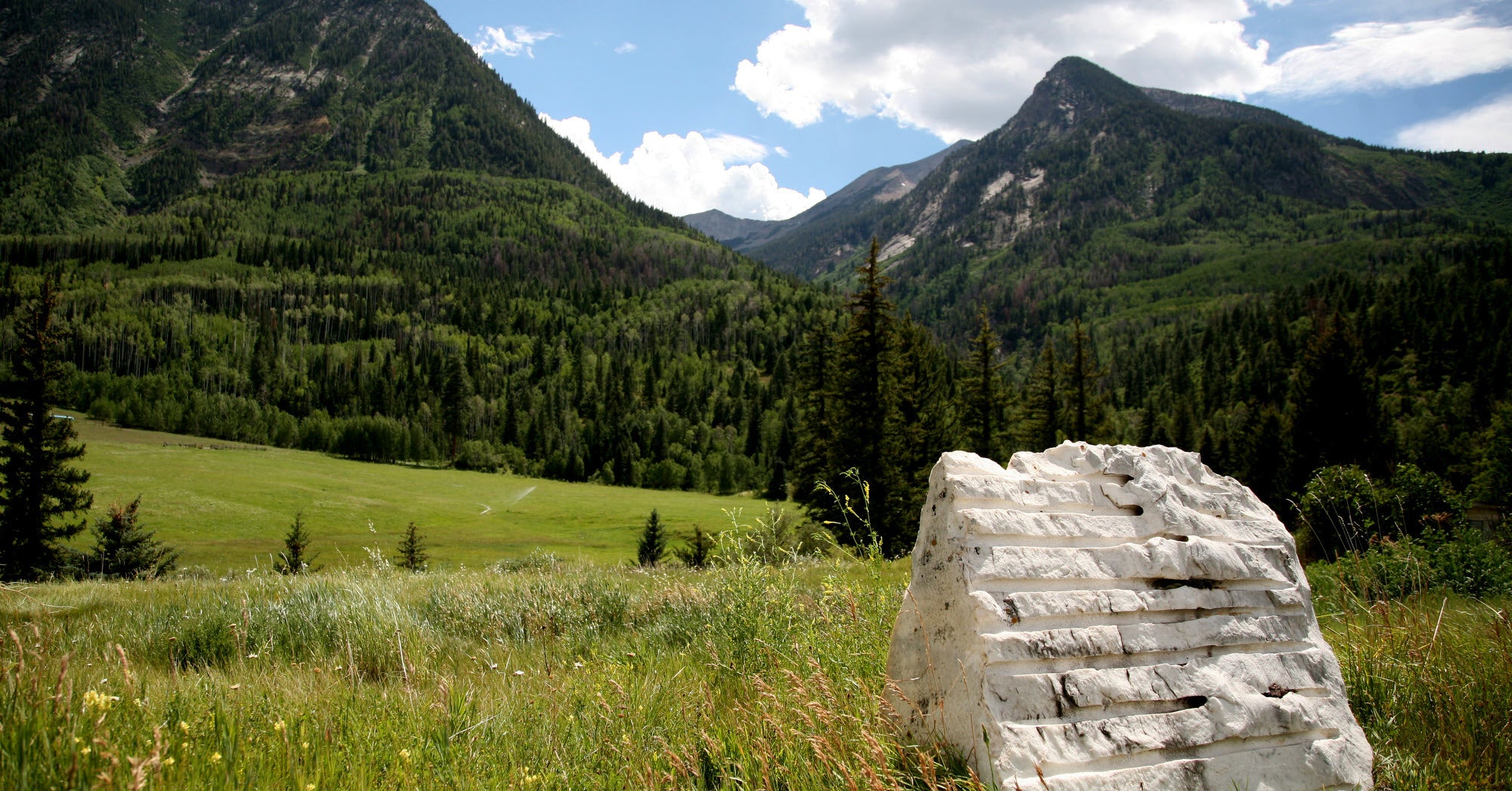Summer comes to the Rocky Mountain's Crystal River Valley, passes and trails open, and one of the finest trails begins with a visit to Marble. You know you're getting there as you spy chunks of marble along the river's edge, then odd blocks in fields, and finally, random carved figures anchoring lawns and slanting wooden porches as the signs to the Marble Mill Site come into view. The best expeditions end with a visit to Marble's Slow Groovin' BBQ.
Enjoy Stina Seig's story of Yule Marble and its reach - to DC and beyond!
In the remote northern reaches of Gunnison County, there’s a speck of a town called Marble. It’s home to about 100 people, one stop sign, one restaurant — and countless giant chunks of brilliant white rock, scattered along its narrow roads and submerged in the Crystal River.
Two decades ago, Michelle Saxer of Denver drove through and noticed those white slabs, some as big as pianos. All this time she wanted to know more, so she wrote to Colorado Wonders.
Turns out they’re historic scraps from the nearby marble quarry.
“Anywhere you see marble is actually where the rail line was,” said Alex Menard, who runs the local history museum. He explained the stone was cast off intentionally to help build up the rail bed of a train system that’s now long gone. “There is marble dumped from the town of Marble almost to Carbondale.”
That’s nearly 30 miles. But the pristine marble that made the cut went much farther.


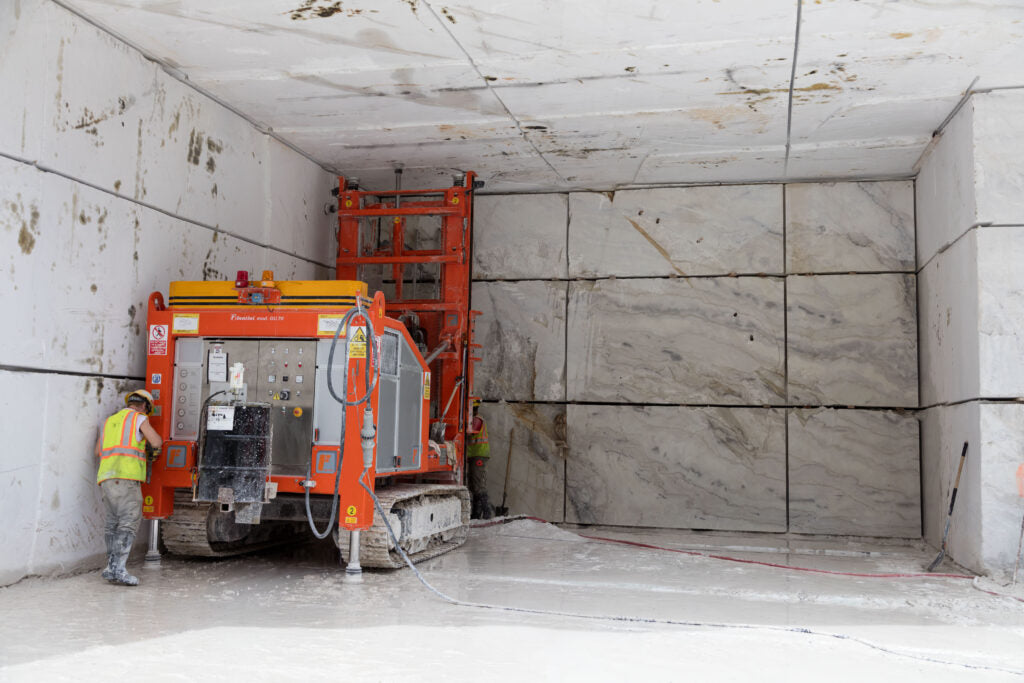
“I would say half the people who come here don't know that the Lincoln Memorial was made here,” Menard said.
While Lincoln himself was carved from Georgia marble, the gleaming building that surrounds him is all Marble marble, quarried, shaped and polished in rural Colorado, more than a century ago.
Marble from Marble was also used in the Hearst Castle, the Tomb of the Unknown Soldier and Denver’s Union Station. It’s even been named the state rock.
It’s called Yule Marble, after one of the first prospectors to find it, and while it only exists in this one little spot, its quarry has been owned by companies from all over the world.
“Including English people, American people, Canadian people, and two different Italian companies,” said Menard, in a practiced flourish.
Though the quarry is not open to the public, its current owner, Colorado Stone Quarries, does offer a peek inside via a promotional video.
Surrounded by what looks like two stories of smooth white stone, spokesman Marco Pezzica explains that his hometown of Carerra, Italy, is the “capital in the world” for excavation of white marble.
But he said Marble’s marble is special.
“Not even in Carerra you have quarry with such a pattern and uniformity,” he said. “Not at all. “
Those traits make this stark-white stone a hot ticket in Italy, where nearly 90 percent is shipped, according to the company’s site. The rest is sold in the U.S.
Even with that global reach, the town of Marble has still boomed and busted. When the quarry closed during World War II, it took nearly 50 years to reopen. During that time, Marble lost much of its population but it kept collecting characters.
Probably the most famous among them is 73-year-old Paul Edward Harris Jr., though everyone knows him by what he’s dubbed his “AKA” name.
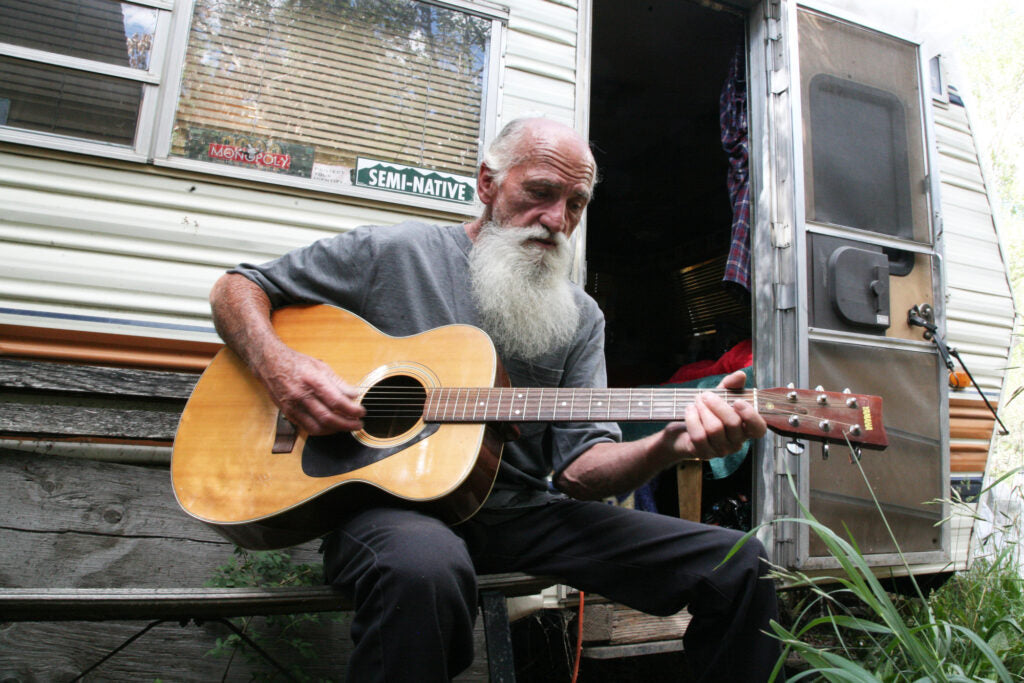
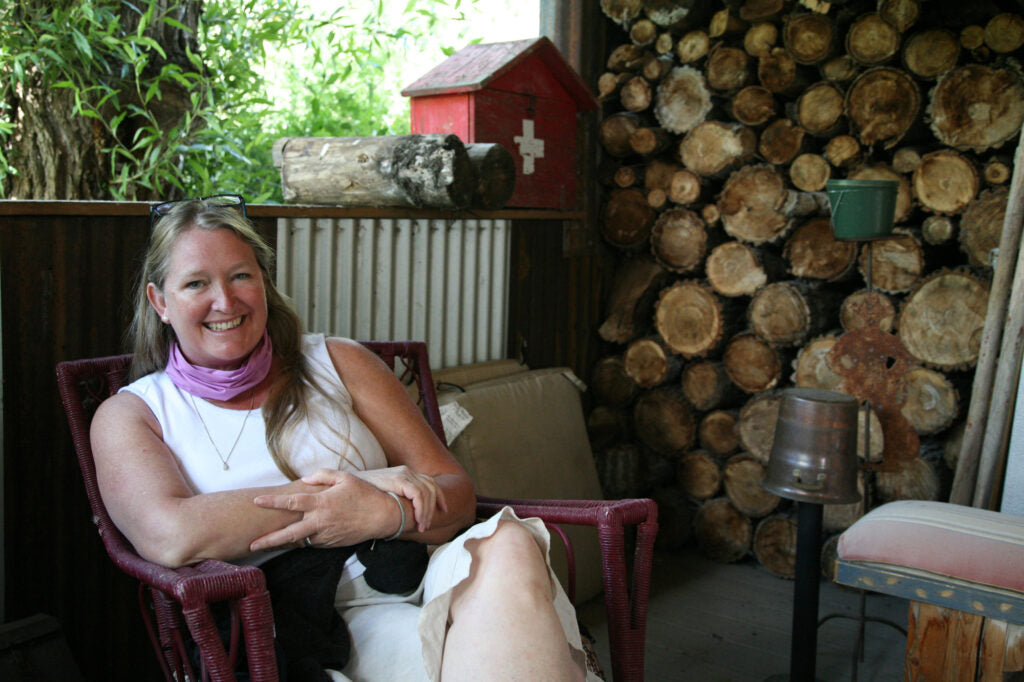
“Lead King Paul,” he said, with a smile. “That’s what they call me after living in Lead King Basin going on 43 years.”
He’s thin with a long white beard and an ever-present wide-brimmed, leather hat. He splits his time between his trailer in Marble and an old miner’s cabin, where he’s the caretaker. It’s only a few miles away, but it can take six hours on snowshoes.
“Not bad for an old geez,” he joked, then affected a fake old-guy voice. “Ain’t that right, sonny? Where’s the beer?”
He’s at home in these rugged mountains, under deliciously dark nighttime skies.
“It’s beautiful,” he said, drawing out each word. “I love it. I love it.”
That love continues even as Marble changes. Lead King Paul remembers when the main road was dirt and only got a few cars a day. Now, summer traffic can be constant.
Hearing the loud roar from passing ATVs, he paused.
“Yeah, kind of noisy, huh?” he said, “I know. I know it.”
Over at Beaver Lake Lodge, not far from the cool water it’s named after, owner Karen Good and her family have lived in town 18 years — long enough to watch Marble be discovered. On busy summer days, it feels like people are wandering up to her place every 15 minutes to ask the same questions.
Where’s the trailhead? Can I use your bathroom? How do you get to Crystal?
The weather-beaten remains of the Crystal Mill with that picturesque waterfall right next to it is one of the most photographed images in all of Colorado. It’s only about 5 miles away on a narrow, four-wheel-drive road, a road now crowded with Jeeps and ATVs.
“We don’t even go up into the backcountry right now on the weekends, because it’s just too busy,” she said.
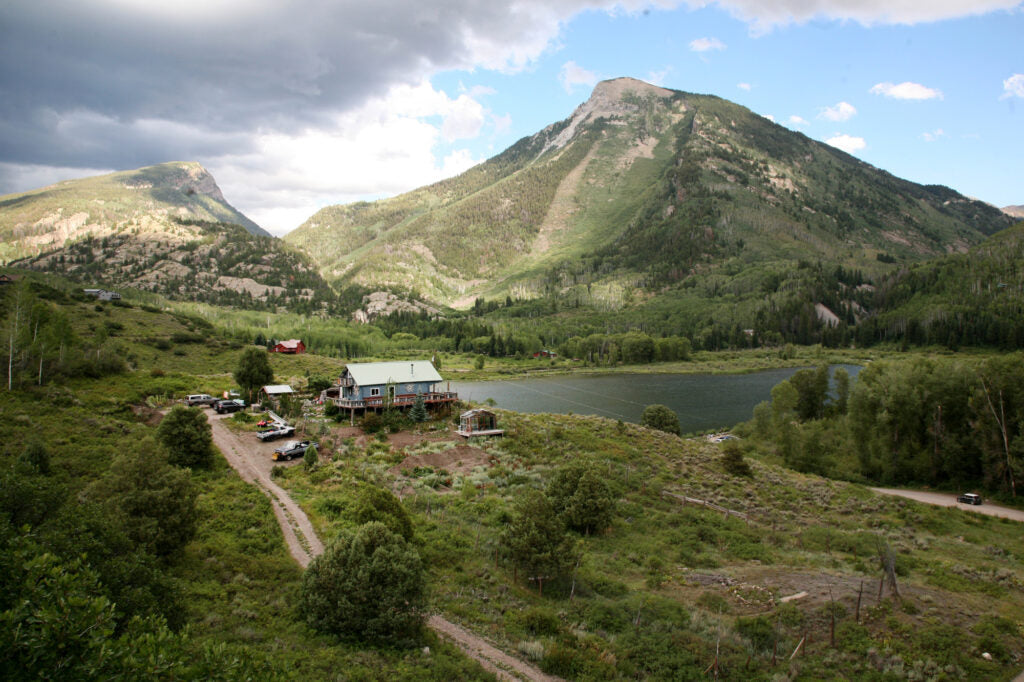

Like many residents, she supports having some kinds of limits of visitors, though she doesn’t know exactly what that would look like.
“I’m also not someone to move somewhere and close the door behind me,” she explained, especially when she knows how great it was for her sons to grow up in this rustic place, without cell phone service or high-speed internet.
Monique Villalobos, who grew up here, recently returned with her husband, both to raise their small kids and to create jewelry out of the town’s namesake.
“There's a lot of women artists up here,” she said, starting to polish a piece of marble on a whirring contraption about the size of a sewing machine.
She makes bears and other shapes in her backyard and said it’s inspiring to work here, in the same place etchings were once done on the Lincoln Memorial. She feels part of a great tradition.
“I think people are starting to wake up and realize that Marble has a very important national history,” she said.
Also, it’s just home. She shows her work at her dad’s gallery in town. Mario Villalobos first came to Marble in the 1970s, when he was just 18. In the decades since, he’s visited places that could be called paradise but never fantasized about moving.
“Naw, man,” describing how he felt one time in Hawaii with his family. “We’re going back to real paradise. We’re going back to Marble.”
Even with the crowds, Mario Villalobos said Marble’s wilderness doesn’t feel too far away. Bears tried to get into his trash the night before. That morning, deer were in his yard.
“Last year, we had two big old bull moose out here. You kidding me?” he said, with a smile. “As long as they keep showing up. I don't care.”
And it’s not all about the wildlife. It’s about the human connection in this place with so little big-city distractions, like with his buddy Lead King Paul.
“You know, the best friends I ever had in my life are right here in this town,” he said.
Even though Lead King Paul may have crabbed about the new crowds, he keeps telling himself the same thing: “Remember, Grandpa: That's life. And it's so beautiful and awesome. You can't blame them for wanting to get out of the city or wherever and come up here and visit this.”
This is a place he knows he’ll never leave.


